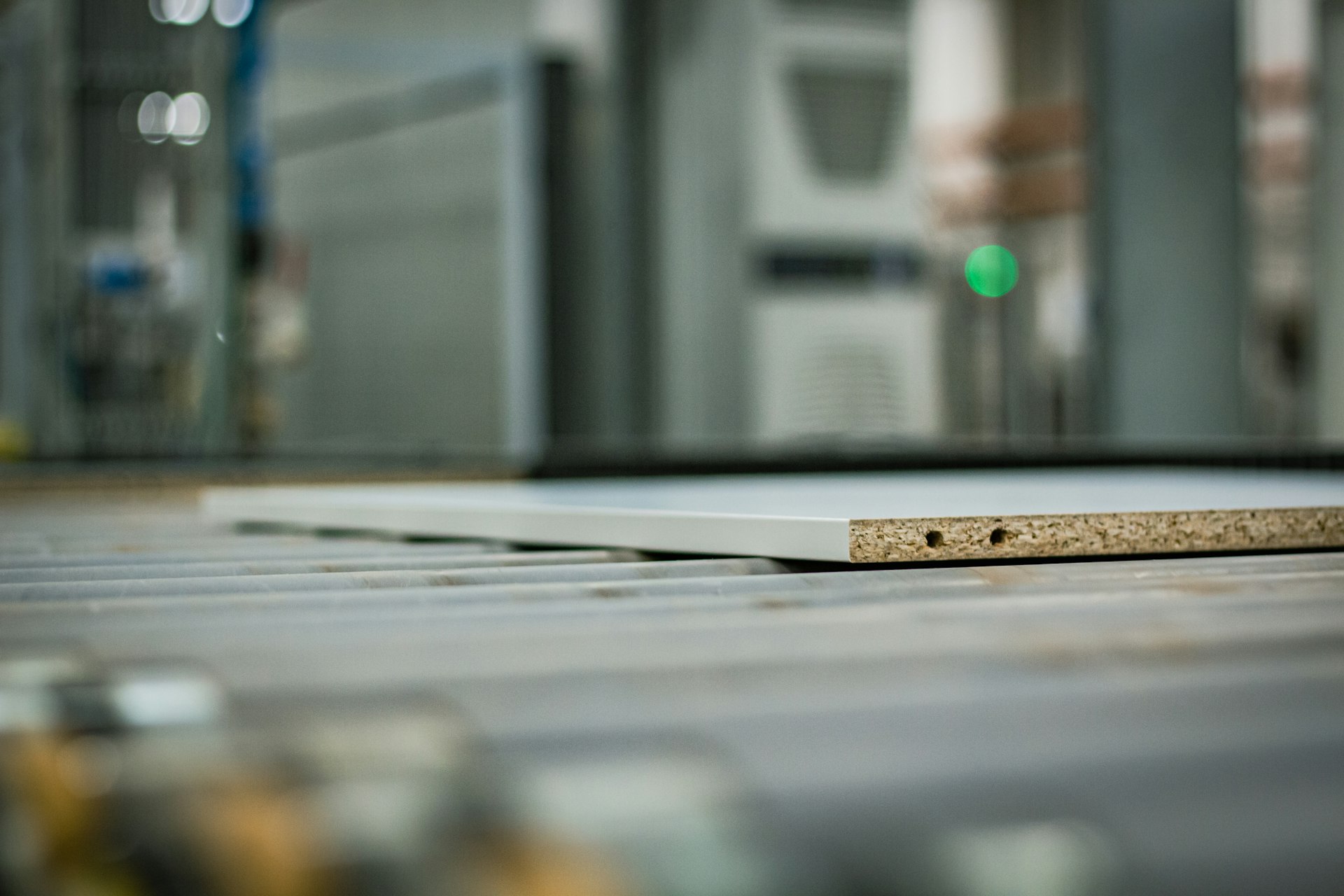Choosing the right millwork board and finish is a critical decision in interior design. Whether you’re working on a luxury hotel, corporate office, or high-end residential project, the materials you select affect not only aesthetics but durability, cost, and long-term performance. In this guide, we break down the most common millwork board types, their finishes, sourcing considerations, and practical examples to help you make informed decisions.
Why do board type and finish matter?
Selecting the proper millwork board and finish impacts:
- Longevity and durability: The right substrate resists warping, delamination, or moisture damage.
- Aesthetic quality: Grain patterns, sheen, and texture influence the overall look of your space.
- Cost efficiency: Optimizing material and finish prevents overbuilding and unnecessary expenses.
- Supplier clarity: Precise specifications reduce production errors, especially when sourcing internationally.
Investing time in specifying both board and finish upfront saves costly mistakes later.

Common Millwork Board Types
Here's a breakdown of the most frequently used boards in millwork, with their benefits, limitations, and typical applications:
| Board Type | Key Benefits | Limitations | Typical Uses |
| Plywood | Cross-laminated strength, good screw holding, lightweight | Requires edge banding or veneer; higher cost | Cabinets, curved panels, structural carcasses |
| MDF (Medium-Density Fiberboard) | Smooth, uniform surface; excellent for painting or veneering | Poor moisture resistance unless treated; heavier than plywood | Interior millwork, painted panels, rounded profiles |
| Particle Board / Chipboard | Cost-effective; stable for flat surfaces | Weak edges, lower durability | Back panels, low-load shelving, case interiors |
| HDF (High-Density Fiberboard) | Denser than MDF; strong in thin profiles | Higher cost; still moisture-sensitive | Drawer bottoms, thin panels, laminate surfaces |
| LVL / LSL (Laminated Veneer or Strand Lumber) | Engineered strength, dimensional stability | Typically hidden; more expensive | Load-bearing millwork, beams, spanning elements |
Tip: When sourcing boards from China or local manufacturers, always request sample panels and verify thickness, core composition, and edge quality.
This short video gives a clear visual breakdown of how different millwork materials compare in strength, cost, and surface finish — a perfect primer before exploring each board type in detail.
Finishes and Surface Treatments
Choosing the correct finish ensures that the board not only looks good but also performs under wear and environmental conditions.
1. Veneer & Real-Face Finishes
Natural wood veneers provide authentic wood aesthetics. Considerations include:
- Veneer thickness
- Grain matching (bookmatching, slip matching)
- Backing material for stability
Example: In a high-end office reception, veneers were used to create a seamless walnut feature wall. Matching veneer and core board ensured the wall remained stable over time.
2. Laminate & High-Pressure Laminate (HPL)
Laminate finishes are durable, consistent, and cost-effective. HPL is ideal for high-traffic areas like hotel lobbies and restaurants.
- Options include wood-grain, matte, glossy, and embossed textures.
- Provides scratch and moisture resistance for frequently used surfaces.
Example: A boutique hotel opted for HPL countertops in guest rooms to combine visual warmth with wear resistance.
3. Paint, Lacquer, and UV Coatings
For modern, minimalist interiors, painted or UV-lacquered millwork is popular.
- Multi-coat spray applications yield smooth, durable finishes.
- Edge sealing and sanding are critical for long-lasting results.
Example: Residential kitchens often use painted MDF panels with UV coatings for a sleek, easy-to-clean finish.
4. Film-Faced / Melamine-Faced Boards
These boards come pre-laminated with decorative sheets (melamine, PVC, PLA).
- Great for scale and consistency.
- Repairs are more difficult compared to veneered or painted surfaces.
Example: Office storage units frequently use melamine-faced boards for uniformity across multiple locations.
5. Edge Banding & Treatments
Even premium boards require edge finishing:
- Options: PVC, ABS, real-wood veneer strips, or laser-edged bands
- Protects against chipping and enhances the overall look

Best Practices: Matching Board to Finish
To maximize both aesthetics and performance, consider the following pairings:
| Finish Type | Recommended Board | Notes |
| Painted Millwork | MDF or fine plywood | Stable cores prevent cracking or warping |
| Veneered Panels | Quality plywood or veneered MDF | Ensures durability and uniform appearance |
| High-Traffic Surfaces | HPL or laminate over dense core | Ideal for counters, bars, or public spaces |
| Moisture-Prone Areas | Moisture-resistant MDF/plywood | Seal all edges for protection |
Sourcing: China vs Local Suppliers
Selecting a sourcing partner is just as important as choosing the right board and finish.
China Sourcing:
- Pros: Cost-effective, wide range of board types, experienced manufacturers, scalable production.
- Cons: Longer lead times, need for precise specifications, potential quality variations.
Local Suppliers:
- Pros: Faster turnaround, easier communication, lower shipping risk.
- Cons: Higher costs, limited material options, smaller production volumes.
Example: A mid-scale hotel project balanced budget and timeline by sourcing HPL panels from China while procuring specialty veneers locally to maintain authenticity and reduce shipping risk.
Guangzhou Sourcing has extensive experience coordinating both local and international suppliers to ensure quality, timely delivery, and compliance with project specifications.
Specifying for Manufacturing
When providing specifications to your millwork partner, include:
- Board type and grade (e.g., “13 mm BB/BB hardwood plywood, void-free”)
- Core species and composition
- Thickness and flatness tolerances
- Emission or certification standards (E0, E1, CARB, FSC)
- Finish details (veneer species, laminate code, paint type, gloss level)
- Edge banding type, thickness, and color
- Assembly method (dowels, cam locks, biscuits)
- Touch-up or repair protocols
Proper specifications prevent defects, improve project outcomes, and streamline production.
Common Mistakes to Avoid
- Under-specifying core material → leads to voids, warping, or structural failure
- Neglecting edge sealing → edges chip, peel, or delaminate
- Mismatch of board and finish → laminates over low-density chipboard often peel or blister
- Skipping mock-ups → always review full-size sample panels under actual lighting
- Ambiguous finish codes → always specify material, texture, and sheen, not just “wood grain”
Key Takeaways
Selecting the right millwork board and finish is fundamental to premium interiors. By combining careful board selection, appropriate finishes, precise specifications, and intelligent sourcing strategies, projects achieve lasting performance and superior aesthetics.
Generalized project insights show that:
- Hotels often require durable, high-traffic surfaces like HPL or melamine over strong cores.
- Offices benefit from veneers and lacquered finishes for a polished, professional look.
- Residential projects commonly use painted MDF and veneer combinations for style and affordability.
Guangzhou Sourcing leverages years of experience coordinating suppliers, testing materials, and providing expert guidance to ensure millwork projects meet design vision, budget, and quality standards.
For further guidance on managing international millwork sourcing, see our guide on FF&E sourcing and our article on veneer selection best practices.





